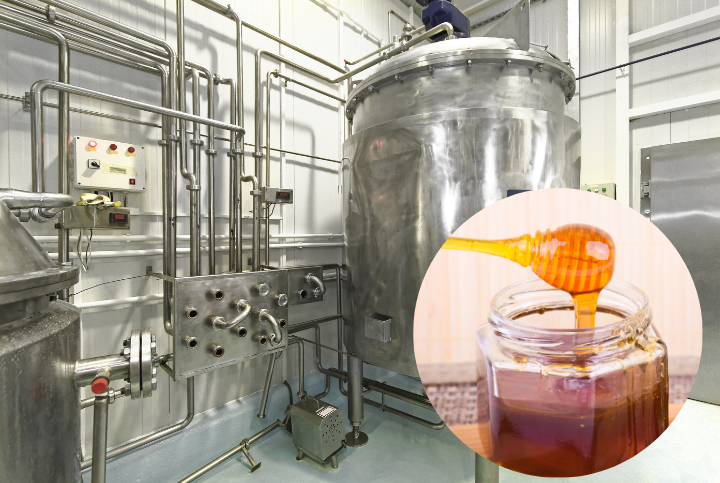When you walk down a supermarket aisle and pick up a bottle of honey, chances are, it’s not what nature intended. Most commercial honey today is heavily processed—and that’s a problem. Let’s break down what honey processing really means, why it’s done, and how it impacts your health.
What Exactly is Honey Processing?
Honey processing typically involves three major steps: heating, filtration, and moisture reduction. At first glance, these might seem harmless or even necessary. But the truth is—these steps strip honey of its natural goodness.
Heating often goes up to 70°C. The idea is to kill yeast and make honey thinner for easier filtration. But here’s the catch: once honey is heated beyond 45°C, it starts losing its vital nutrients. That’s where the damage begins.
Filtration, usually done with ultra-fine filters (10 to 50 microns), gives honey a shiny, smooth look and delays crystallization. But this also removes bee pollen—the very ingredient loaded with nutrients and medicinal value.
Then comes moisture reduction, often used when beekeepers extract unripe honey. This honey contains excess moisture (20–25%) compared to the ideal 18% in ripened honey. To increase shelf life, processors evaporate the moisture, but in the process, they also evaporate its aroma and destroy its beneficial enzymes.
Why Is Honey Processed at All?
It all comes down to shelf appeal and profit margins. Processed honey:
- Prevents fermentation in high-moisture honey
- Delays crystallization (which most consumers wrongly see as a sign of impurity)
- Gives it that glossy, “perfect” look
- Allows blending with sugar syrups and other adulterants
So, while it looks good on shelves, it does your body no good.
What’s in Raw Honey?
Raw honey is nature’s real gift. It contains bee pollen, enzymes, antioxidants, vitamins, and minerals—all of which play a significant role in promoting health and preventing disease. Historically, people consumed honey straight from the hive—no filters, no heating, no gimmicks. That’s the honey that supported immune health and aided healing for centuries.
Sadly, truly raw honey is rare today. Most bottles labeled “pure” or “organic” on store shelves have still undergone some form of processing or pasteurization.
Why Processed Honey Falls Short
Processed honey may look neat, but it’s a hollow product. Once it goes through intense heating and ultrafiltration, all those medicinal properties vanish. What’s left is just a sugary syrup with a golden hue—devoid of nutrients, taste, and the floral aroma of raw honey.
In contrast, raw honey retains its full spectrum of micronutrients, bee pollen, and enzymes—everything your body needs to truly benefit from it.
How Bharat Honey Stays True to Nature
At Bharat Honey, we’ve avoided the industrial shortcut for over three decades. Our focus is on delivering honey as close to its natural state as possible.
We collect only ripened honey from trusted beekeepers. Post-harvest, we let the honey stand for a day in containers. This allows light impurities like wax, pollen chunks, and bee parts to float to the top, while heavier debris settles below. This simple, natural method ensures clean, hygienic honey—no need for harsh processing.
To protect it from moisture absorption (especially in humid conditions), we store honey in airtight containers. Excess humidity can degrade honey quality if exposed to air, especially when relative humidity exceeds 48%.
Before packing, we gently warm the honey to 44°C—not beyond, this process does not destroys the enzymes present in honey . This is just enough to allow a smooth pour for bottling. Then, we strain it using a 200-micron mesh, which filters out visible particles but preserves bee pollen . No pasteurization. No ultrafiltration. Just raw, natural honey—handled with care.
Conclusion
Most brands won’t tell you that their honey is processed—and in the process, stripped of its natural goodness. What your body truly needs is raw, unprocessed, or gently handled honey that retains the enzymes, antioxidants, and nutrients nature intended.
At Bharat Honey, our goal is simple: to remove only visible impurities—never the essence of honey itself. That’s why we gently warm our honey before straining. This careful approach protects its diastase enzymes, preserves its antioxidants, and keeps the HMF (Hydroxymethylfurfural) levels low—all key indicators of truly raw, healthy honey.
We don’t cut corners. We don’t compromise. We let nature do the hard work—and we simply deliver it to you, as it is.

